Why Bundt Cake Is America’s Most Beloved Ring-Shaped Dessert
A bundt cake is any cake baked in a distinctive fluted tube pan that creates an neat ring shape with decorative ridges. Here’s what makes bundt cakes special:
- Shape: Ring or donut form with a central tube for even heat distribution
- Pan: Trademarked fluted tube pan by Nordic Ware since 1950
- Origin: Derived from German Bundkuchen, adapted for American kitchens
- Popularity: Over 60 million bundt pans sold across North America
- Celebration: November 15 is National Bundt Day in the United States
The bundt cake phenomenon started with a simple problem. In 1966, Ella Helfrich’s “Tunnel of Fudge” bundt cake took second place at the Pillsbury Bake-Off, earning her $5,000. But the real winner was the bundt pan itself – Pillsbury received more than 200,000 requests from home bakers wanting to buy one.
What makes bundt cakes so appealing to food lovers and travelers alike? The shape isn’t just pretty – it’s practical. The central tube allows thick batters to bake evenly, while the fluted sides create natural ridges that hold glazes beautifully. Whether you’re exploring local bakeries on your culinary travels or recreating flavors from around the world in your own kitchen, bundt cakes offer endless possibilities.
From classic vanilla to exotic flavors like guava and Persian love cake, these ring-shaped desserts have become symbols of celebration and community gathering. They’re easy to slice, travel well, and always look impressive on any table.
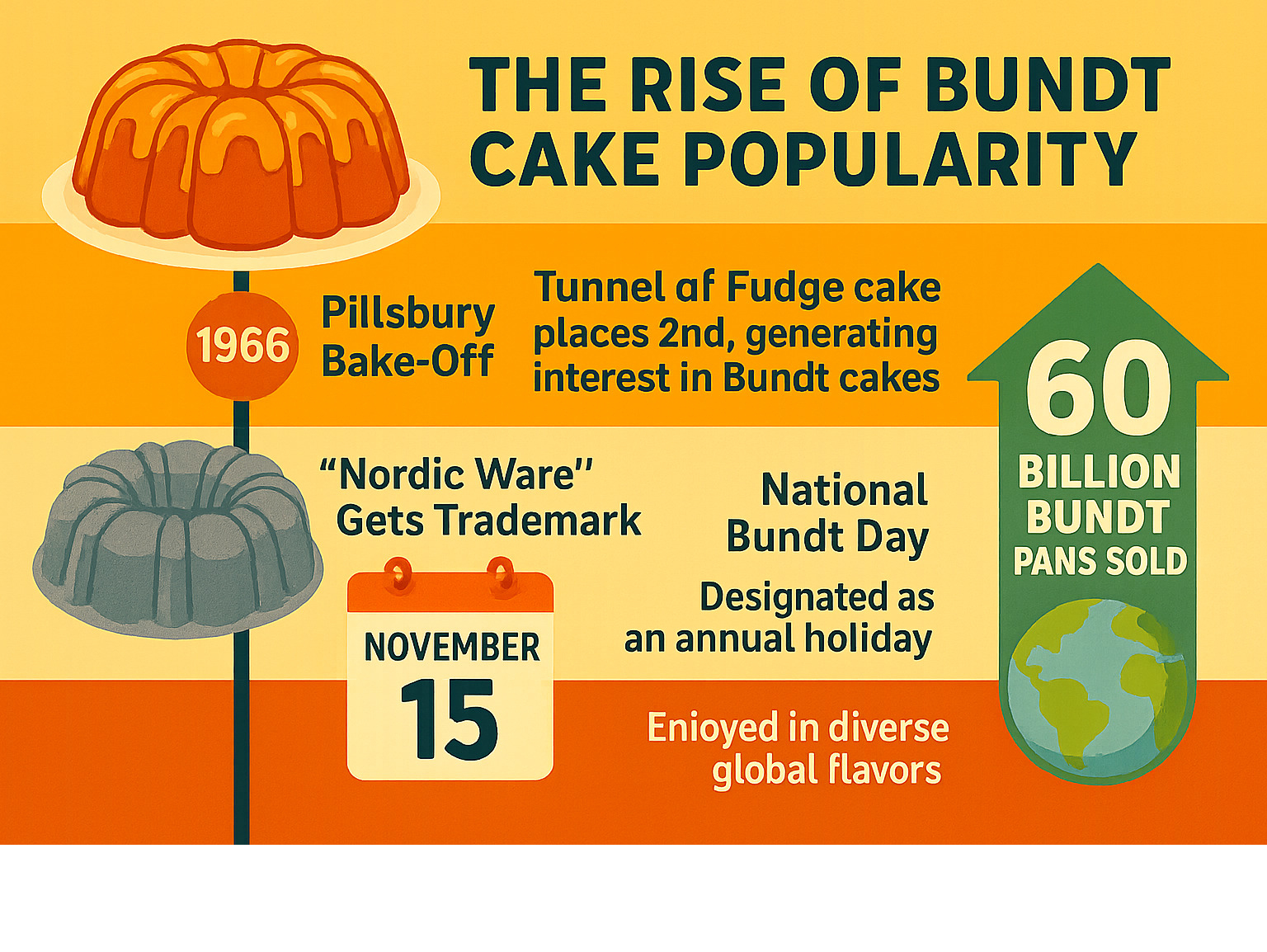
Common bundt cake vocab:
What Is a Bundt Cake?
Here’s the beautiful simplicity of a bundt cake: it’s any cake baked in that gorgeous fluted tube pan that creates the signature ring shape we all recognize. Unlike pound cakes or chocolate cakes that are defined by their ingredients, or layer cakes defined by their construction method, bundt cakes are all about the pan that shapes them.
The magic happens in that distinctive pan design. The central tube isn’t just there to look pretty – it’s a brilliant piece of engineering that allows heat to reach the center of even the thickest batters. Think of it as giving your cake a heating core that works from the inside out while the fluted walls heat from the outside in.
Those beautiful fluted ridges serve double duty too. They create more surface area for even heat distribution during baking, then transform into perfect little valleys that catch and hold glazes like they were designed for Instagram. Which, let’s be honest, they basically were – just decades before social media existed.
Nordic Ware deserves credit for trademarking the “Bundt” name back in 1950. They cleverly added a “t” to the German “Bundkuchen” to make it uniquely theirs. Their original cast aluminum pans remain the gold standard because aluminum conducts heat so beautifully and evenly.
| Feature | Bundt Pan | Tube Pan |
|---|---|---|
| Shape | Fluted decorative ridges | Smooth straight sides |
| Purpose | Decorative cakes with glazes | Angel food and chiffon cakes |
| Release | Requires careful greasing | Often has removable bottom |
| Heat Distribution | Improved by fluted design | Relies on tube only |
Bundt Cake vs Other Cakes
The bundt cake world gets delightfully confusing when you realize that almost any cake recipe can become a bundt cake just by changing the pan. But there are some key differences worth understanding.
Pound cakes and bundt cakes often get mixed up because many pound cake recipes work beautifully in bundt pans. Traditional pound cake has that dense, rich crumb density from equal weights of butter, sugar, eggs, and flour. Bake it in a bundt pan, and voilà – you’ve got a bundt cake that happens to be pound cake flavored.
Layer cakes require the whole stacking and frosting routine between separate cake rounds. Bundt cakes skip that fussy assembly and go straight to the glazing stage. They’re like the confident, low-maintenance cousin of the layer cake family.
Sheet cakes serve crowds easily but lack the wow factor. Bundt cakes give you that same serving capacity with built-in elegance. They’re perfect for when you want to look like you tried harder than you actually did.
Bundt Cake Shape & Pan Design
The science behind bundt cake pan design is genuinely fascinating. That central tube creates what engineers call optimal heat distribution – heat travels through the tube, up the sides, and meets in the middle for perfectly even baking.
Cast aluminum remains the preferred material for serious bakers because it conducts heat consistently without hot spots. Modern non-stick coatings have made our lives easier, but they can’t fix poor heat conduction from cheaper materials.
A standard 12-cup bundt pan holds the same volume as two 9-inch round pans, making recipe conversions straightforward. The fluted design isn’t just pretty – it actually helps the cake release heat more efficiently and provides natural portion guidelines when you’re slicing.
Scientific research on pan materials shows how different materials affect baking times and final texture. Understanding your pan helps you become a better baker, whether you’re recreating a recipe from your travels or experimenting with new flavors at home.
From Old-World Tradition to Modern Icon
The bundt cake has quite the love story, beginning centuries ago in the cozy kitchens of Europe. German bakers were already perfecting their Bundkuchen and Austrian cooks were mastering Gugelhupf – both beautiful ring-shaped cakes baked in ornate fluted molds. These weren’t just desserts; they were centerpieces for special occasions and family gatherings.
When German immigrants packed their belongings for America, they brought these cherished recipes with them. By 1889, American cookbooks featured these European-style cakes, but there was one big problem: finding the right pan. The traditional fluted tube molds were nearly impossible to locate in American stores, leaving many homesick bakers frustrated.
Enter H. David Dalquist, a Minneapolis-based entrepreneur who would change American baking forever. In 1950, his company Nordic Ware began producing aluminum bundt cake pans, creating the trademark name by simply adding a “t” to the German word “Bund.” For the first fifteen years, sales were steady but unremarkable – mostly purchased by families with German and Eastern European roots who remembered these cakes from the old country.
Then came the moment that transformed the humble bundt cake into an American icon. At the 1966 Pillsbury Bake-Off, Ella Helfrich from Houston presented her “Tunnel of Fudge” cake. She didn’t win first place, but her $5,000 second-place prize (worth nearly $47,000 today) created something much bigger than prize money could buy.
The publicity was absolutely incredible. Pillsbury was flooded with over 200,000 requests from home bakers desperate to get their hands on bundt pans. Nordic Ware couldn’t manufacture them fast enough to meet demand. Almost overnight, the bundt cake went from ethnic specialty to must-have American kitchen staple.
Milestones in Bundt History
The journey from European tradition to American obsession happened surprisingly quickly. Nordic Ware’s 1949 launch of their first bundt pans seemed modest at the time, but the foundation was set for something special.
The 1966 Pillsbury Bake-Off moment remains the most important turning point in bundt history. Those 200,000 pan requests in the weeks following the contest proved that Americans were hungry for something new and exciting in their home baking.
By the 2000s, the bundt cake had earned such a devoted following that November 15 became National Bundt Day – a celebration of this uniquely American success story. Today, with over 60 million pans sold, original Nordic Ware designs have even earned a place in the Smithsonian collection, cementing their status as genuine Americana.
Why Bundt Cakes Rule Celebrations
There’s something magical about the way a bundt cake brings people together. The word “Bund” literally means “group” or “gathering” in German, and these cakes seem designed for exactly that purpose. The distinctive donut shape isn’t just pretty – it’s incredibly practical for feeding crowds.
Every slice comes with those gorgeous glaze-ready ridges that make even simple powdered sugar look professional. The ring shape creates natural portion control and ensures everyone gets an equally beautiful piece. Plus, that central hollow space? It’s perfect for creative presentation, whether you’re tucking fresh berries inside or creating an dramatic fruit cascade.
Bundt cakes are also wonderfully travel-friendly. They don’t require delicate frosting that might get damaged in transport, and they hold their shape beautifully. This makes them absolute potluck favorites – impressive enough for special occasions but sturdy enough to survive a car ride to your destination.
For food lovers exploring culinary traditions, bundt cakes represent the beautiful evolution of immigrant recipes into something uniquely American. They’re a perfect example of how food travels and transforms, creating new traditions while honoring old ones.
If you’re planning your next gathering and want more crowd-pleasing options, our guide to Chimichanga offers another fantastic party-ready dish to consider.
Bundt Baking Mastery: Ingredients, Techniques & Troubleshooting
The magic of a perfect bundt cake starts with understanding your ingredients and treating them right. You don’t need fancy equipment or exotic ingredients – just butter, sugar, eggs, flour, and a liquid component working together in harmony.
Here’s where many home bakers find their secret weapon: cream cheese or sour cream. These tangy additions don’t just add moisture – they create that tender, almost velvety crumb that makes people ask for your recipe. The slight acidity also helps break down gluten strands, giving you a more delicate texture.
Temperature matters more than you might think. Room temperature ingredients blend together smoothly, creating an even batter without lumps or streaks. Cold butter won’t cream properly with sugar, and cold eggs can cause your batter to curdle. Plan ahead and pull everything from the fridge about an hour before baking.
The creaming method is your foundation for success. Beat that butter and sugar until it’s light, fluffy, and almost white – this usually takes 3-5 minutes with an electric mixer. You’re not just mixing; you’re incorporating air that will help your cake rise and stay tender.
When it comes to pan size, there’s no guessing game. A 10-cup bundt pan works for most standard recipes, while heartier batters need a 12-cup pan. Fill your pan about two-thirds full – any more and you’ll have overflow, any less and your cake will look disappointingly flat.
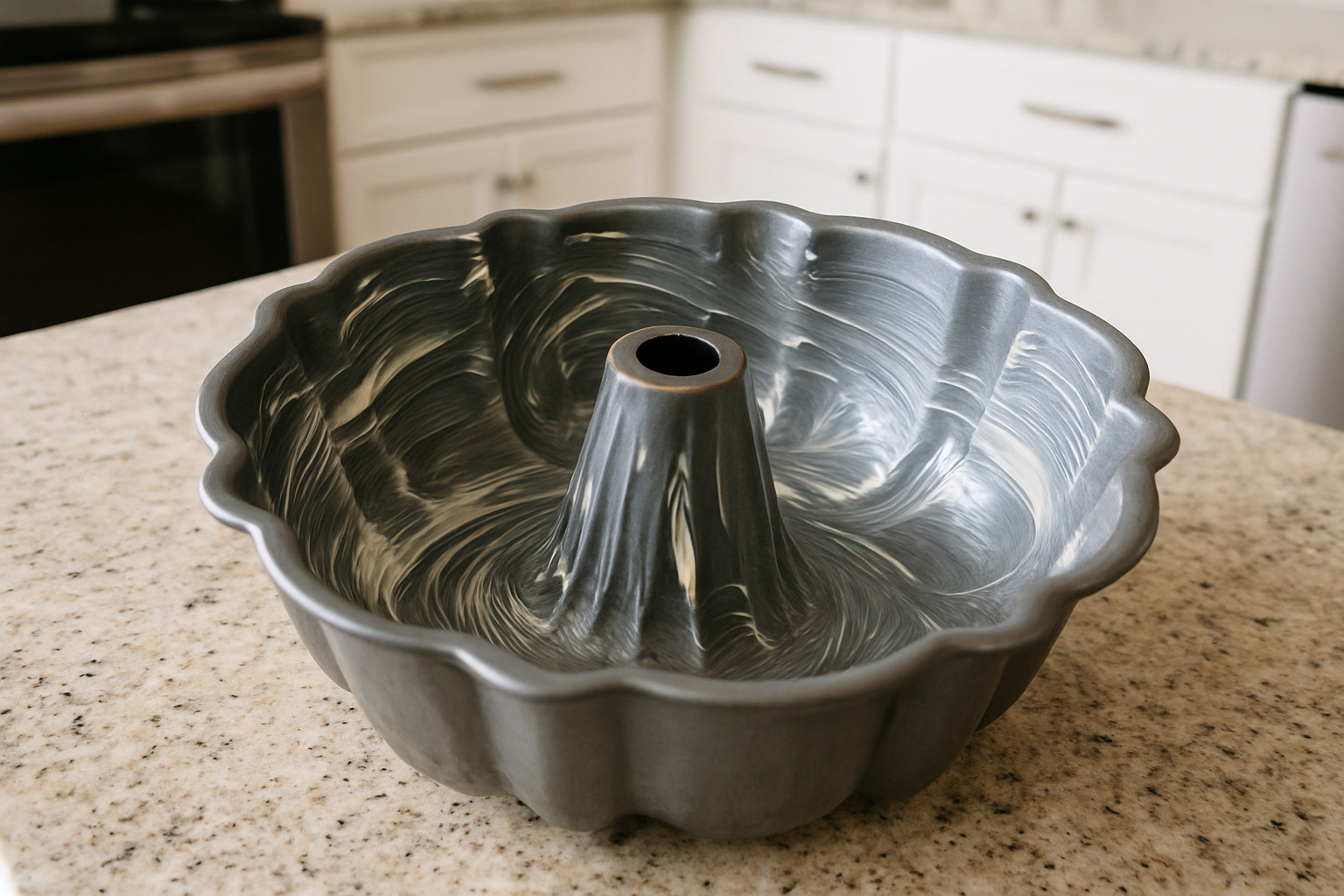
How to Make a Moist & Tender Bundt Cake
The secret to moisture isn’t just about adding more liquid – it’s about fat content and smart mixing. That butter-sugar creaming we talked about? It’s creating tiny air pockets that will hold moisture and create tenderness.
Here’s a professional trick that makes a real difference: add a tablespoon of cornstarch to your flour before measuring. This simple addition creates an incredibly tender crumb by slightly weakening the gluten structure. You’ll taste the difference immediately.
Many bakers swear by the alternating method – adding your dry ingredients and liquids in turns, starting and ending with flour. This prevents overmixing while ensuring everything combines evenly. Mix just until the flour disappears; overworked batter creates tough, dense cakes.
For extra moisture that lasts for days, try the poke-and-soak technique. After your cake cools slightly, poke holes all over with a skewer and brush on flavored syrup. The cake absorbs the liquid, staying incredibly moist. This works especially well with citrus syrups or rum-based mixtures.
Preventing & Fixing Sticking Disasters
Let’s be honest – we’ve all been there. You carefully unmold your beautiful bundt cake, only to have chunks stick stubbornly to the pan. The good news? This disaster is almost always preventable.
Timing your greasing makes all the difference. Grease your pan right before adding batter, not hours ahead. Butter can pool and create sticky spots if it sits too long. The best method? Brush melted butter into every single ridge and curve, then dust with flour, tapping out the excess.
Some bakers make their own “cake goop” – equal parts butter, flour, and vegetable oil mixed into a paste. This mixture never fails to release, even from the most intricate pan designs.
If disaster strikes, don’t panic. Let your cake rest in the pan for 10-15 minutes after baking. This cooling period often helps stubborn spots release naturally. For really stuck cakes, try the towel-steam method: drape a hot, damp kitchen towel over your inverted pan for 5-10 minutes. The gentle steam works wonders.
As a last resort, pop that stuck cake back into a 300°F oven for 10 minutes. The gentle heat often loosens everything just enough for successful removal. Martha Stewart taught us this trick, and it’s saved countless cakes from the trash bin.
Ingredient Swaps for Special Diets
Modern bundt baking welcomes everyone to the table. Gluten-free baking has come so far that many people can’t tell the difference. Use a high-quality 1:1 gluten-free flour blend, and you often won’t need to change anything else in your recipe.
For even richer flavor, try almond flour blends. They create incredibly moist cakes with a subtle nutty taste that pairs beautifully with fruit or chocolate flavors.
Egg-free baking works beautifully in bundt cakes. Replace each egg with a flax egg (1 tablespoon ground flaxseed mixed with 3 tablespoons water, let sit for 5 minutes) or use unsweetened applesauce. The dense nature of bundt cakes makes them very forgiving for these substitutions.
Dairy-free versions shine with coconut yogurt or your favorite non-dairy milk. The key is maintaining the fat content that keeps your cake tender and moist.
For more inspiration from global baking traditions, check out our French Desserts guide – many of those techniques translate beautifully to bundt format.
Cooling, Glazing & Storing Like a Pro
Proper cooling prevents those heartbreaking cracks that can ruin a beautiful cake. Cool in the pan for exactly 10-15 minutes – any longer and it might stick, any shorter and it might break. Then flip onto a wire rack and let it finish cooling completely.
Glazing timing is crucial for that professional look. Your cake must be completely cool, or the glaze will soak in instead of creating that gorgeous coating we’re after. A simple vanilla glaze (powdered sugar, milk, and vanilla) works on virtually any flavor combination.
Chocolate ganache turns any bundt cake into something special – just heat cream and pour over chopped chocolate, then drizzle over your cooled cake. Citrus glazes made with fresh juice and zest brighten fruit-based cakes perfectly.
Storage is simple but important. Keep glazed bundt cakes under a cake dome or in an airtight container at room temperature for 3-5 days. They actually improve after a day, as flavors meld and moisture distributes evenly.
For longer storage, freeze unglazed cakes for up to 3 months. Wrap tightly in plastic wrap, then aluminum foil. Better yet, slice and freeze individual portions – perfect for when you want just one piece with your morning coffee.
Creative Flavors & Unexpected Bundt Pan Uses
The world of bundt cake flavors extends far beyond basic vanilla and chocolate, though these classics never go out of style. Today’s creative bakers are pushing boundaries with exotic combinations that would make any food traveler curious. Imagine biting into a Persian love cake scented with cardamom and rosewater, or savoring a key lime bundt that transports you straight to the Florida Keys.
Coffee lovers gravitate toward rich chocolate espresso bundts that rival any specialty coffeehouse dessert. The deep, complex flavors develop beautifully in the bundt pan’s even-heating design. Meanwhile, tropical enthusiasts accept guava bundts that bring Caribbean sunshine to any table.
Seasonal baking keeps bundt cakes exciting throughout the year. Spring awakens with bright lemon-poppy combinations and delicate strawberry variations. Summer calls for fresh berry medleys and coconut-lime creations that taste like vacation. When autumn arrives, pumpkin spice bundts become the star of harvest gatherings, joined by apple cider and maple walnut varieties. Winter warming spices like cinnamon, nutmeg, and cardamom create cozy bundts perfect for holiday entertaining.
But here’s where bundt pans really surprise people – they’re not just for sweet treats. Savvy home cooks finded that savory bundt “cakes” create stunning dinner party centerpieces. A well-seasoned meatloaf baked in a bundt pan cooks evenly thanks to that central tube, while the fluted shape makes slicing neat and impressive.
The creative possibilities don’t stop there. Bundt pans excel at molding layered gelatin salads for retro-themed gatherings. Ice cream bombes become achievable for home cooks when you use the bundt shape as your guide. We’ve even seen adventurous cooks create lasagna rings where the central space holds a beautiful garnish or extra sauce.
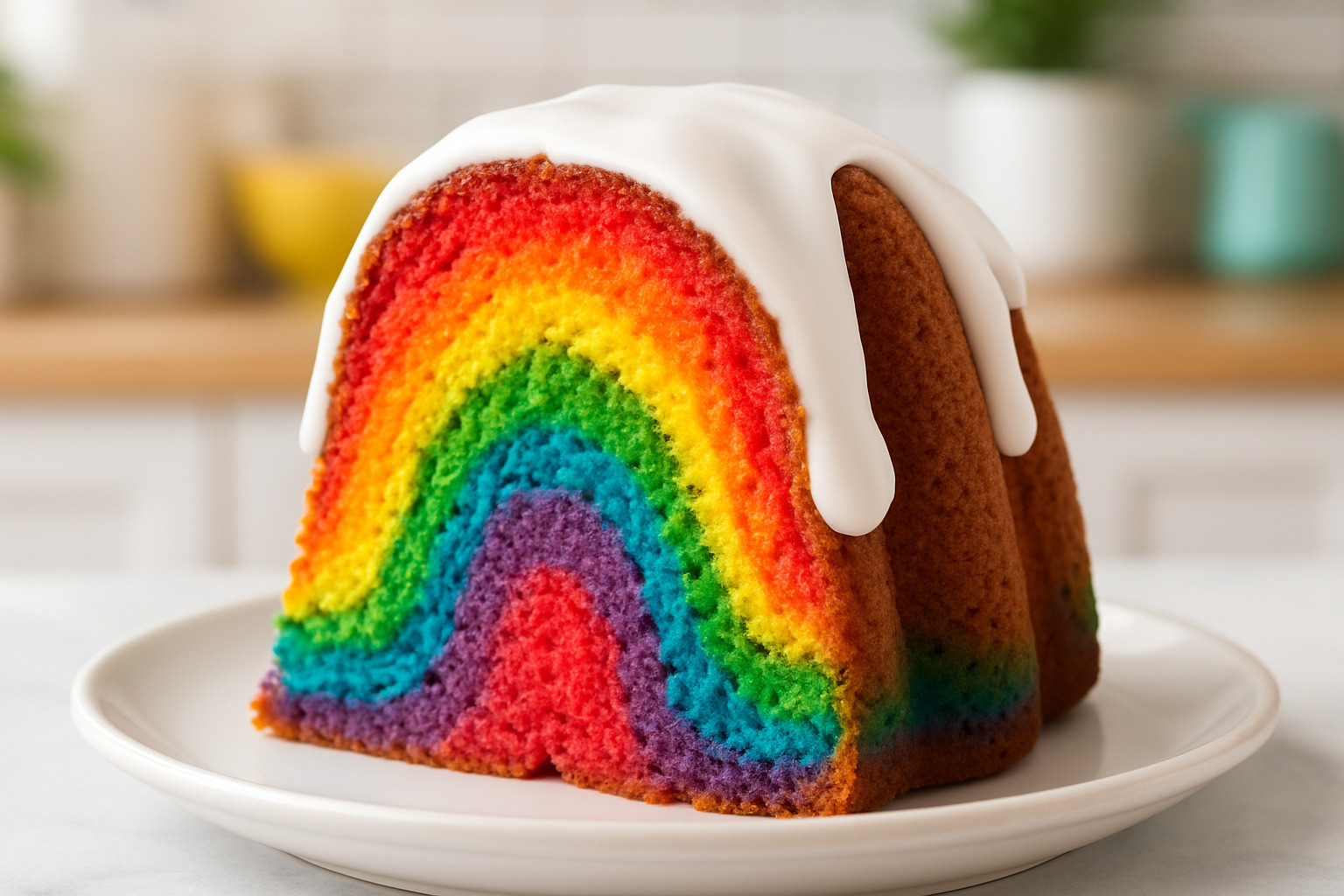
For those intrigued by savory bundt applications, our Ground Beef Recipes collection includes several bundt-pan adaptations that turn ordinary ingredients into conversation starters.
If you’re looking for quality equipment, this Amazon Bundt pan recommendation consistently delivers professional results for home bakers.
Making Bundt Cakes the Star of Any Menu
A perfectly executed bundt cake commands attention without requiring advanced decorating skills. The inherent beauty of that fluted ring shape means a simple vanilla glaze or light dusting of powdered sugar creates restaurant-quality presentation. This makes bundt cakes ideal for hosts who want impressive results without spending hours on decoration.
Holiday entertaining becomes easier when you choose bundt cakes as your dessert centerpiece. They bake as single units, freeing up valuable oven space for other dishes. Plus, their generous size feeds a crowd while maintaining neat portion control – each slice naturally follows those beautiful ridged lines.
Brunch buffets particularly benefit from bundt cakes’ easy serving style. Coffee shop-inspired flavors like cinnamon streusel or blueberry lemon appeal perfectly to morning palates. Guests can easily cut their own portions, and the cake stays fresh longer than individual pastries.
Food tourism enthusiasts often find that local bakeries showcase regional flavors through their bundt offerings. These ring-shaped beauties travel well when properly wrapped, making them excellent edible souvenirs. Recreating finded flavors at home extends those travel memories long after the trip ends.
Whether you’re planning a themed dinner featuring global cuisines or simply want a dessert that photographs beautifully for your food trips, bundt cakes deliver reliability and wow factor in equal measure.
Frequently Asked Questions About Bundt Cake
Baking the perfect bundt cake can feel intimidating, but most common challenges have simple solutions. Here are the questions we hear most often from home bakers and culinary enthusiasts exploring bundt cake territory.
What should I do if my Bundt cake gets stuck?
Take a deep breath – even experienced bakers face this frustrating situation, and most stuck cakes can be saved with patience and the right technique. The key is not to rush the process.
Start by letting your cake cool in the pan for about 45 minutes. This cooling period often helps the cake naturally release from the pan as it contracts slightly. Once cooled, gently run a thin knife or offset spatula around the edges to loosen any stubborn spots.
If your bundt cake is still playing hard to get, try the towel method that professional bakers swear by. Place a hot, damp kitchen towel over your inverted pan and let it sit for 5-10 minutes. The gentle steam works wonders for releasing cakes that seem permanently attached to their pans.
When all else fails, return the pan to a 300°F oven for 10 minutes. This gentle warming often provides just enough heat to loosen the cake without overcooking it. Even if your cake comes out with a few battle scars, a good glaze can cover most imperfections.
Can I bake a Bundt recipe in regular pans?
Absolutely! This flexibility makes bundt cake recipes incredibly versatile for home bakers. The key is understanding volume conversions and adjusting baking times accordingly.
A standard 12-cup bundt recipe divides perfectly into two 9-inch round cake pans (6 cups of batter each) or fits beautifully in one 13×9 sheet pan. The flavor and texture remain identical – you’ll just miss out on that signature fluted shape.
Reduce your baking time by about 10-15 minutes when using regular pans, since the batter will be shallower and bake faster. Always test for doneness with a toothpick inserted in the center. If you’re making layer cakes, you can still achieve that impressive presentation by stacking and frosting your rounds.
How do I know what size Bundt pan to use?
Pan sizing can make or break your bundt cake experience, but it’s easier to figure out than you might think. Most recipes specify the pan size they’re designed for, but measuring your pan’s capacity gives you confidence in your choice.
Fill your bundt pan with water and measure the volume to determine its capacity. A 10-cup pan typically measures 9 inches in diameter, while a 12-cup pan spans about 10 inches. These are the two most common sizes you’ll encounter in recipes and stores.
When in doubt, follow the two-thirds to three-quarters full rule. Fill your pan within this range, and bake any excess batter as cupcakes for testing doneness or enjoying as a baker’s treat. Overfilling leads to messy overflows, while underfilling creates disappointingly flat cakes that don’t showcase the beautiful bundt shape.
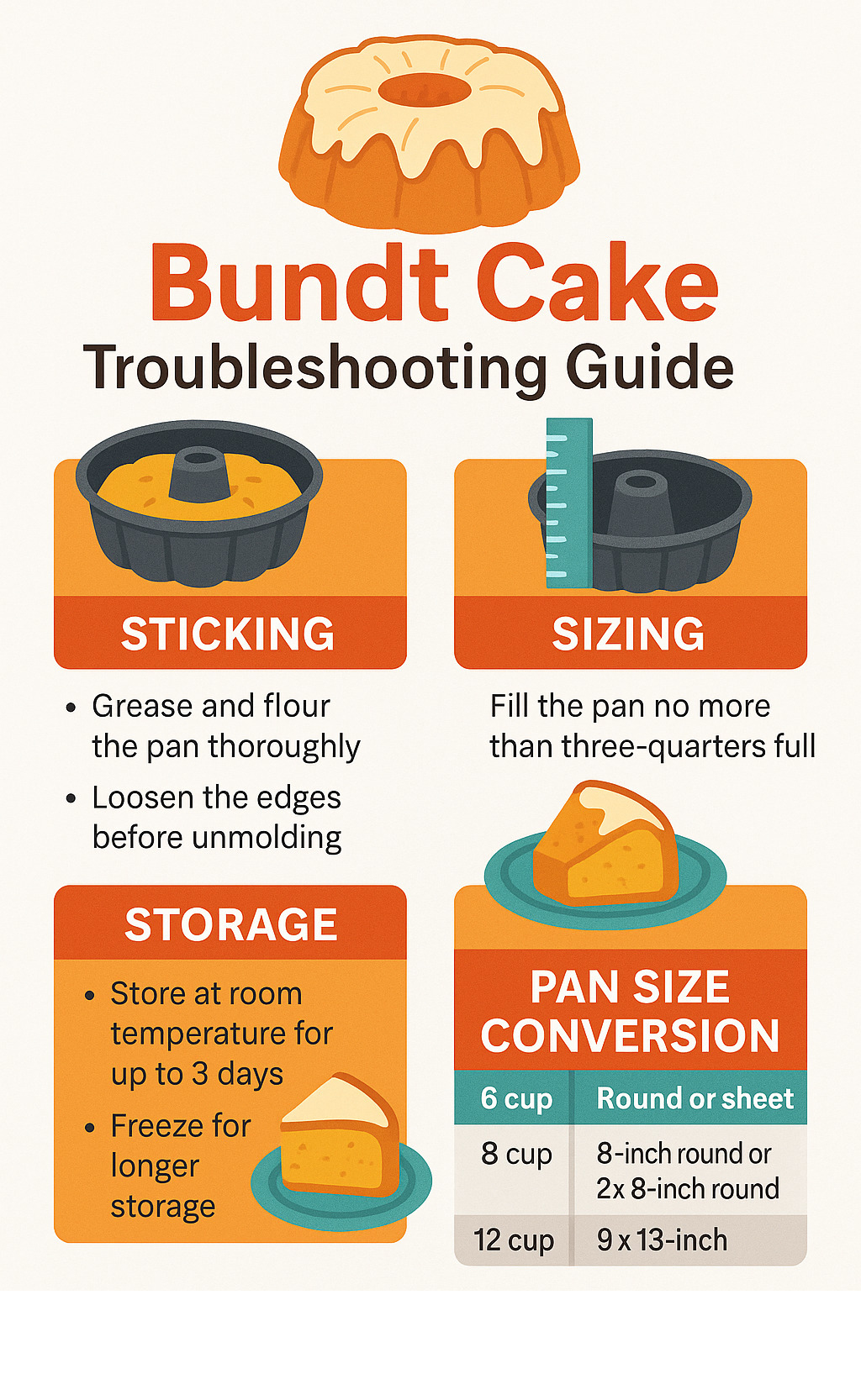
Conclusion
There’s something magical about pulling a perfectly golden bundt cake from the oven – that moment when you flip the pan and reveal those beautiful fluted ridges never gets old. This isn’t just about baking; it’s about creating edible memories that bring people together around tables across America and beyond.
From its journey from German Bundkuchen to becoming a beloved American tradition, the bundt cake proves that the best culinary stories often start with simple ingredients and a dash of creativity. Whether you’re finding a new flavor at a local bakery during your travels or recreating that amazing cake you tried on vacation, bundt cakes offer that perfect blend of comfort and trip.
What makes bundt cakes truly special is their democratic nature. You don’t need professional decorating skills to create something that looks impressive on any dining table. A simple glaze transforms humble ingredients into something celebration-worthy. They’re forgiving enough for nervous first-time bakers yet versatile enough to challenge seasoned home cooks looking to experiment with flavors from around the world.
Every bundt cake tells a story – of holiday traditions passed down through generations, of potluck dinners where neighbors become friends, of that perfect slice shared over coffee while planning your next culinary trip. They embody the spirit of exploration that drives food lovers to seek out new experiences, whether that’s trying a Persian love cake at an ethnic bakery or mastering the perfect lemon glaze in your own kitchen.
As you continue your culinary journey, the best findies often come from the most unexpected places. That little bakery you stumble upon while traveling might serve the most incredible bundt cake you’ve ever tasted. Or perhaps your own kitchen will become the birthplace of a new family favorite that gets requested at every gathering.
The Dining Destination celebrates these moments of culinary findy and creation. Food connects us all, and bundt cakes – with their ring shape symbolizing unity and gathering – perfectly represent this universal truth.
Ready to explore more delicious trips? Find our complete collection of culinary guides and travel-worthy recipes at The Dining Destination.

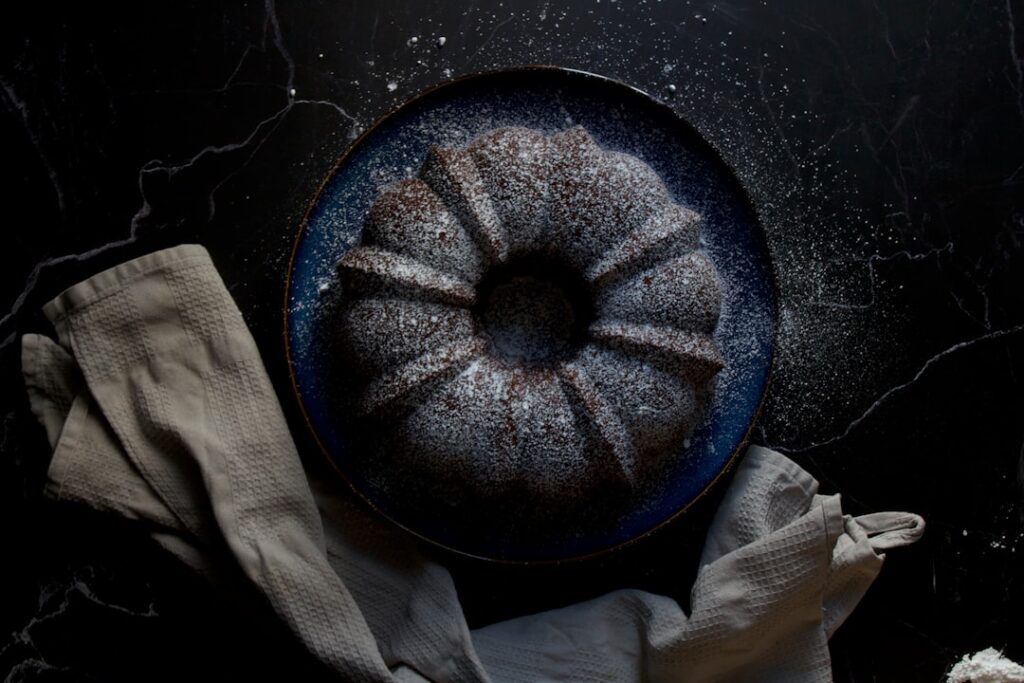






1 thought on “Everything You Need to Know About Bundt Cake”
Pingback: 7 Reasons Why You Will Love These Zucchini Recipes - The Dining Destination
Comments are closed.